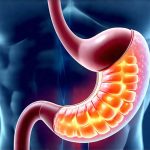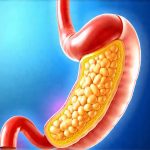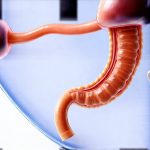Indigestion, a common complaint characterized by discomfort in the upper abdomen, is often attributed to overeating, spicy foods, or stress. However, beneath these frequently cited causes lies a less-understood contributor: low stomach acid. While seemingly counterintuitive – many associate indigestion with too much stomach acid – insufficient production of hydrochloric acid (HCl) can disrupt the entire digestive process, leading to a cascade of uncomfortable symptoms. This isn’t simply about feeling bloated or having heartburn; it’s about a compromised ability to properly break down food and absorb vital nutrients. Understanding this often-overlooked aspect of digestion is crucial for identifying the root cause of discomfort and pursuing appropriate strategies for relief.
The digestive system relies on a precise sequence of events, beginning with mechanical breakdown in the mouth and continuing with chemical digestion in the stomach. Hydrochloric acid plays an indispensable role in this process, not just by dissolving food but also by activating key enzymes like pepsin, responsible for protein breakdown. Furthermore, it acts as a barrier against harmful bacteria ingested with our meals and facilitates the absorption of crucial minerals like iron and calcium. When HCl levels are inadequate, this carefully orchestrated system falters, creating an environment ripe for digestive distress and potential nutrient deficiencies. It’s important to remember that digestion is a complex ecosystem, and imbalances in one area can profoundly affect others. If you suspect low stomach acid, consider first-line assessments to gain more insight.
The Role of Stomach Acid in Digestion
Stomach acid isn’t just about dissolving food; it’s the cornerstone of efficient digestion. Its primary function extends far beyond simply breaking down what we eat. It’s a crucial component in initiating the entire digestive process, setting the stage for optimal nutrient absorption throughout the gastrointestinal tract. The stomach is designed to create a highly acidic environment – typically ranging between a pH of 1.5 and 3.5 – necessary for activating pepsinogen into pepsin, the enzyme responsible for breaking down proteins. Without sufficient HCl, protein digestion becomes severely impaired, potentially leading to undigested protein reaching the intestines where it can be fermented by bacteria causing gas, bloating, and discomfort.
Beyond protein breakdown, stomach acid plays a vital role in sterilizing food. It acts as a first line of defense against harmful pathogens that may enter our bodies through food, reducing the risk of infection. This is particularly important given the vast array of microorganisms present in our environment. Furthermore, HCl aids in the absorption of essential nutrients like iron, calcium, vitamin B12, and zinc. These minerals require an acidic environment to be converted into absorbable forms. Chronic low stomach acid can thus contribute to nutrient deficiencies over time, even with a seemingly balanced diet. Understanding how to test for stomach acid can empower you to take control of your digestive health.
The decline in stomach acid production isn’t always a result of disease; it’s often a natural consequence of aging. As we age, the parietal cells responsible for HCl secretion tend to become less efficient. However, other factors like chronic stress, certain medications (particularly proton pump inhibitors used for heartburn), and dietary habits can also contribute to reduced acid production. Identifying these contributing factors is key to addressing the issue effectively.
Symptoms of Low Stomach Acid
The symptoms associated with low stomach acid can often mimic those of high stomach acid conditions, creating confusion and misdiagnosis. This is partly why it’s so frequently overlooked. Common signs include bloating, gas, belching, nausea, abdominal discomfort after meals, undigested food in stool, and even diarrhea. Unlike the burning sensation typically associated with heartburn caused by excessive acid, low stomach acid often presents as a dull ache or pressure in the upper abdomen.
A critical indicator can be an aversion to protein-rich foods. Individuals with low stomach acid may find themselves craving carbohydrates and avoiding meat or other sources of protein because they trigger digestive discomfort. Nutrient deficiencies, such as iron deficiency anemia (characterized by fatigue, weakness, and pale skin), can also develop over time due to impaired absorption. Furthermore, bacterial overgrowth in the small intestine (SIBO) is frequently linked to low stomach acid, as the acidic environment normally helps regulate gut bacteria populations. How constipation backlog can also play a role in digestive discomfort.
It’s vital to remember that these symptoms are not exclusive to low stomach acid; they can be indicative of other conditions as well. Therefore, consulting with a healthcare professional for proper evaluation and diagnosis is essential before attempting any self-treatment. A comprehensive assessment should consider your medical history, dietary habits, and potential contributing factors.
Identifying Low Stomach Acid: Testing Methods
Diagnosing low stomach acid isn’t always straightforward. Traditional endoscopy often doesn’t reveal clear evidence of reduced acidity because the body can temporarily increase acid production during testing procedures. Several methods are used to assess stomach acid levels, each with its own limitations and advantages. One common approach is the HCl Challenge Test, which involves taking a specific dose of betaine hydrochloride (a form of HCl) under medical supervision to observe for any improvement in digestive symptoms.
Another method is gastric analysis, where a small probe is used to measure pH levels in the stomach over a period of time. This test can be more accurate but is also invasive and less commonly performed. Newer testing options include comprehensive stool analysis, which can provide insights into gut bacteria balance and indirectly suggest issues with digestion. However, it’s important to note that no single test definitively confirms low stomach acid; diagnosis often relies on a combination of symptoms, medical history, and testing results.
It is crucial not to self-diagnose or attempt to treat low stomach acid without consulting a healthcare professional. Improper supplementation with HCl can be harmful if you actually have high acidity or other underlying digestive issues. A qualified practitioner can help determine the appropriate course of action based on your individual needs and circumstances. Distinguishing between stomach and colon gas is also important for accurate diagnosis.
Lifestyle and Dietary Strategies for Support
While addressing low stomach acid often requires a multifaceted approach, several lifestyle and dietary modifications can provide significant support. Focusing on mindful eating habits is paramount. This involves chewing food thoroughly to aid mechanical digestion, eating meals in a relaxed environment, and avoiding large portions that overwhelm the digestive system. Incorporating bitter foods into your diet – such as dandelion greens, arugula, and radicchio – can stimulate stomach acid production naturally.
Reducing stress levels is also crucial, as chronic stress can inhibit HCl secretion. Practices like yoga, meditation, and deep breathing exercises can help manage stress effectively. Regarding dietary supplements, digestive enzymes containing betaine hydrochloride (under the guidance of a healthcare professional) may be considered to aid digestion. However, these should not be used long-term without addressing underlying causes.
Furthermore, minimizing consumption of processed foods, sugary drinks, and excessive alcohol can reduce strain on the digestive system. Staying adequately hydrated is also essential for optimal digestion. How emotional eating impacts bloating is worth exploring as well. Remember that consistency is key; implementing these changes gradually and making them a part of your daily routine will yield the most beneficial results. To further support digestive health, consider how to calm a bloated stomach without medicine. Finally, understand how a sedentary lifestyle can contribute to gas retention and overall digestive issues.


















